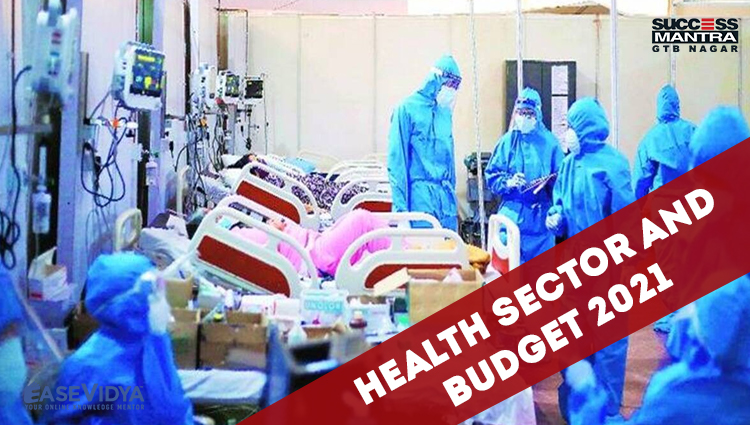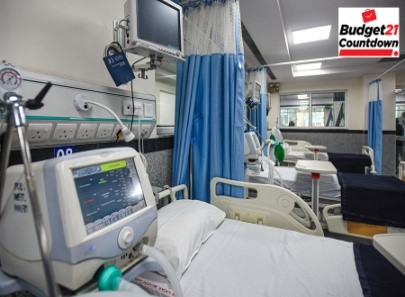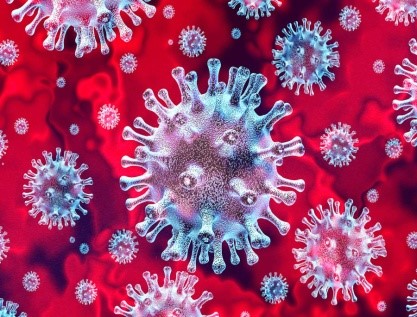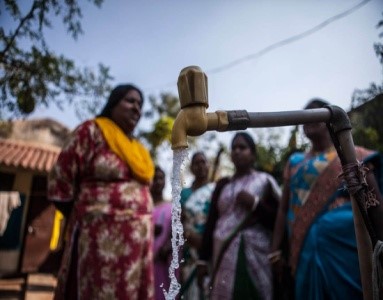
HEALTH SECTOR AND BUDGET 2021
HEALTH SECTOR AND BUDGET 2021

Today, India is amidst this global pandemic, a black swan event which has re-emphasized that our biggest resource is our people and hence, has brought to the forefront an urgent need for stronger health systems to ensure the well being of its people. The Budget for FY 2021-22 has come up with a holistic approach to health, incorporating ‘preventive’, ‘curative’, and ‘well-being’ aspects with an increase of 137% as compared to the previous fiscal. However, the numbers often seem high until evaluated carefully. The outlay on the health sector has been lowered to approximately 10% as compared to the estimates for the FY 2020-21.
CURRENT SITUATION IN HEALTH SECTOR

India’s health infrastructure came under considerable strain in 2020, with 11 million Covid cases and perhaps over a million requiring hospitalisation. India currently has one doctor over the population of 1,445 against the WHO norm of 1:1000. India spent 1.8% of its GDP on health in FY 2020-21 and 1-1.5% in the previous years. As compared with the OECD countries’ average of 7.6% and other BRICS countries’ average of 3.6% on their health sector, this is considerably low. As a result, India is among the top nations with the highest Out Of Pocket Expenditure (OOPE). According to estimates, out of pocket expenses in healthcare in India hover close to 62%, nearly thrice the global average of 18%. A report released by the Johns Hopkins Bloomberg School of Public Health in 2019 suggested that nearly one out of every 100 Indian children does not live to celebrate their fifth birthday on account of either diarrhoea or pneumonia. Suboptimal access to clean water and sanitation is directly linked to diseases such as diarrhoea, polio and malaria.
HEALTH BUDGET 2021
The Budget has committed to an outlay of ₹2,23,846 crore in health and well-being for 2021-22, a 137% increase over previous year’s Budget Estimate of ₹94,452 crores. This includes a ₹60,030 crore outlay on drinking water and sanitation, a ₹2,700 crore outlay on nutrition, nearly ₹49,000 crore as Finance Commission grants and ₹35,000 crore toward vaccination. Water and sanitation sector have received a 179% increase over the previous year’s allocation from Rs 21,518 crore to Rs 60,030 crore. This is also in line with the Economic Survey’s recommendation of increasing public health spending to about 2.5-3% of GDP. Another important public health-related announcement in Budget 2021 was the government’s decision to expand the coverage of the pneumococcal vaccine across the country. The launch of Pradhan Mantri Atmanirbhar Swasth Bharat Yojana (PMANSBY) was also announced under the budget. It laid emphasis on the expansion of health and wellness centres along with a ₹13,192 crore Finance Commission grant for strengthening the primary health system through local government bodies.
ASSOCIATED ISSUES WITH IT

Reduced budgetary allocation: The Union Budget 2021-22 allocated Rs 71,268.77 crore to the Union Health and Family Welfare Ministry. However, the revised estimates for last year were Rs 78,866 crores. This implies the budgetary allocation to the Union health ministry came down by nearly 10%.
Allocation for vaccination: Apart from the health outlay, ₹35,000 crore was allocated for COVID-19 vaccination in FY 2021-22. Even assuming the cheapest prices of vaccines for all the citizens, India will be able to vaccinate only 65% of its total population with this amount. Moreover, this Finance Commission grant for COVID-19 vaccination is a one-time allocation and, therefore, does not strengthen the overall system at all.
Combined health and water & sanitation sector: There is an increased allocation for water & sanitation but allocation for nutrition has decreased by 27%. Added together, health, water and sanitation and nutrition make up the claimed 137% increase in allocation to “health” services with a real decline in healthcare and nutrition. The misses: The budget has clearly missed mentioning any reduction in GST on active pharmaceutical ingredients (API). Reduction of import duty on medical devices that could have helped reduce the cost of healthcare services for citizens is another aspect missing in the budget.
CONCLUSION
To bring down costs: Beyond a few islands of excellence such as the AIIMS, investments in other medical colleges shall be encouraged to possibly bring down costs and ramp up quality of health services. The government may focus on medical education, infrastructure and research in an expanded health Budget.
Public Private Partnerships: Emphasising on Public Private Partnerships (PPP) in other clinical procedures and hospitals and leveraging private sector expertise in the vaccination drive for a quicker and successful achievement of the target.
Incentivised R&D and reduced GST: Incentivising R&D by additional tax deductions to further support greater investments in new drug developments and reducing GST on life-saving and essential drugs.
Skill enhancement of healthcare workers: To prepare the existing healthcare workforce to provide the people the proposed healthcare facilities, it is important to give significant attention to their training, re-skilling, and knowledge upgradation. To cater to this need, the government can take into account public-private collaborations. The health sector has found a prominent place in the government’s agenda over the last few years, and it has increased even more amid the pandemic.
Although much remains to be done, the Union Budget 2021–22 has laid a strong foundation to increase the resilience of the sector in the post-COVID-19 era and achieving Universal Health Coverage by 2030 as part of the Sustainable Development Goals agenda.
QUESTIONS (1-5)
Q.1 In a recently presented budget FY 2021-22, How much funds are allocated for the health & wellbeing sector in the Union Budget 2021-22?
- Rs 2,23,846 crore: ANSWER
- 2,87,000 crore
- 1,97,000 crore
- 1,10,055 crore
Q.2 Consider the following statements and state which of the following is correct in the context of the above passage?
- The Budget for FY 2021-22 has come up with an increase of 137% as compared to the previous fiscal.
- The launch of Pradhan Mantri Gareeb Kalyan Yojana was also announced under the heading 'health & well-being' of the budget?
- Only I follows: ANSWER
- Only II follows
- Both I & II follows
- None is correct
Q.3 Under Health and Wellbeing, which one of the following is not among the major three areas?
- Preventive
- Diagnosis: ANSWER
- Curative
- Wellbeing
Q.4 Which of the following statements is/are correct in the context of the Poshan Mission 2.0 launched under the Budget of FY 2021-22
- Merging the Supplementary Nutrition Programme and the Poshan Abhiyan
- Intensified strategy to be adopted to improve nutritional outcomes across 112 Aspirational Districts
- It was launched as the part of the PM Aatma Nirbhar Swasth Bharat Yojana: ANSWER
- None of the above
Q.5 Which of the following is not amongst the pillars of the Union Budget 2021-22 announced by the Finance Minister Nirmala Sitharaman?
Inclusive Development for Aspirational India
- Reinvigorating Human Capital
- Innovation and R&D
- Minimum Government and Maximum Governance
- None of the above: ANSWER












0 Comment